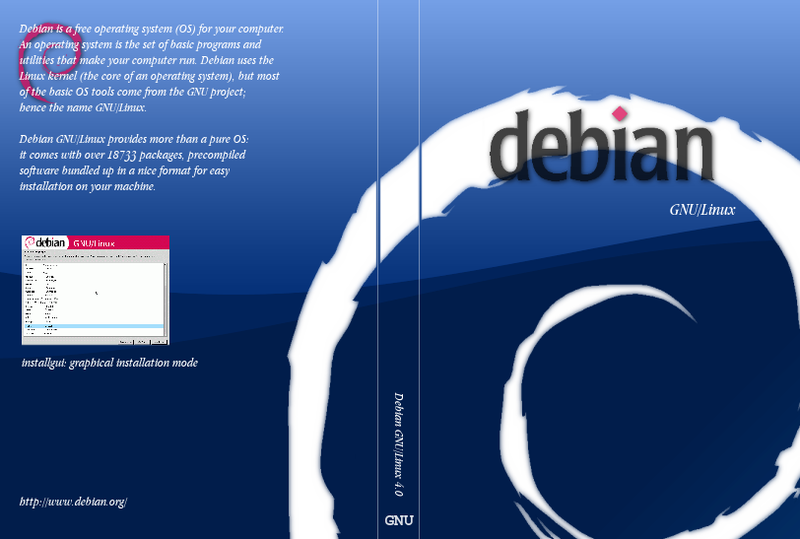

A new introduction to Debian 7 (code-named "Wheezy") [1], a distribution which offers plenty of choice when it comes to desktop environments [2], is aiming to capture new users. I am myself a Debian user and I have installed half a dozen desktop environments on it. Some of the latest Debian news [3,4] says that students are being recruited to work on Debian, which is also popular among students as users. Kwheezy (KDE and Wheezy) [5,6] and SolydX 201309 reviews [7,8] show that there is a thriving developers community around Debian (Ubuntu too is Debian-derived) and examples from education [9] including Skolelinux [10,11] and Knoppix [12] (its founder is now teaching at Kaiserslautern University of Applied Sciences) help demonstrate the academic side of the distribution, which is widely favoured among teachers and schools. It was the distribution of choice for Brazil's schools.
When it comes to contributions to GNU/Linux, the only group which can compete with Fedora (Red Hat) is Debian. Ubuntu (Canonical) is mostly marketing. ⬆
So here you are with your new Debian system. Now you might be wondering, “Which programs do I use?”
LXDE is a desktop environment, which aims the low-performance hardware and old computers. However, you can use it on with modern computers and accessories too, making them flashing fast.
The Google Summer of Code has now come to an end, and the 15 students working the whole summer on improving Debian have sent in their final reports. They've worked on various subjects such as ZFS on Linux integration, a rewrite of the package tracking system, improvements to Debian search, scan-building the Debian archive, a MIPS N32/N64 port, and a redesign of metapackage creation for Debian Blends. The full list of Debian GSoC students and their projects can be found on the Debian blog. The Debian project thanks the GSoC students for their amazing work and the Debian mentors who followed them during these four months.
I have always been a categorically against the KDE desktop experience. I've never understood it, and never really tried. Part of that might be because I started with GNOME, I don't know. What I do know for certain is that I have always shied away from KDE desktops and therefore I have avoided many distributions. Something about Kwheezy however, has intrigue me enough to make me want to take a look. I have many presuppositions that will have to be overturned in order to be unbiased, but I am willing to give it a very good try. Whether you are a fan or foe of KDE, put some of your biases aside and join me for this review.
Debian has not always had a good reputation when it comes to being welcoming to new Linux users. Kwheezy is a Debian-based distribution that aims to change that by making Debian easier to install, and by offering the slick KDE desktop environment. Kwheezy is a blend of Debian 7.1 (Wheezy) and KDE 4.8.4.
Linux Mint has some serious competition it seems! SolydXK is gradually growing on me and like me, on many other devoted Linux users. This distro right now comes in KDE and XFCE versions and is a spin off from the Linux Mint Debian. LM Debian as of now has two desktop environments, Cinnamon and Mate, and no longer supports XFCE or KDE. That is where SolydXK contributes; more specifically providing users a simple and ready to use spin of Debian with all the qualities of Linux Mint. It is targeted towards small and medium enterprises and non-government organizations in addition to the home users.
All those users fretting over the demise of Mint Debian XFCE spin can now rejoice with SolydX. It aims to provide users a simple, stable and secured operating system and targeted to small businesses, non-profit organizations in addition to the home users. SolydX is based on Debian testing branch and hence, gets updated applications more quicker than Debian stable. I tested the earlier releases and was very happy with it. However, I didn't get time to pen down a review. So, here I am finally with a review of one of my favorite distros, SolydX, more specifically the 201309 release of the same.
I was never happier than when I discovered that a working lab could be converted to GNU/Linux or updated in an hour simply by making machines boot PXE, installing Debian GNU/Linux as a LTSP server. If you need thick clients, it’s simple to install on one and re-image the rest in parallel with Clonezilla and multicasting. Clonezilla is being tested for inclusion in the Debian GNU/Linux distribution for the next release.
Debian Edu is a complete operating system for schools. Through its various installation profiles you can install servers, workstations and laptops which will work together on the school network. With Debian Edu, the teachers themselves or their technical support can roll out a complete multi-user multi-machine study environment within hours or a few days. Debian Edu comes with hundreds of applications pre-installed, but you can always add more packages from Debian.
Skolelinux, a Linux distribution based on the Debian Edu project that provides an out-of-the box environment of a completely configured school network, is now at version 7.1 Beta 2.
A couple of weeks ago I approached Klaus Knopper (Founder of Knoppix) via email asking whether he would be interesting in answering a few questions about the Knoppix project.